10979 Fristephenson is a carbonaceous Sulamitis asteroid from the inner regions of the asteroid belt, approximately 5 kilometers in diameter. It was discovered during the Palomar–Leiden Trojan survey on 29 September 1973, by Ingrid and Cornelis van Houten at Leiden, and Tom Gehrels at Palomar Observatory in California, United States. The dark C-type asteroid was named for British historian of astronomy Francis Richard Stephenson.
763 Cupido is a Flora asteroid, tumbler and slow rotator from the inner regions of the asteroid belt, approximately 7 kilometers in diameter. It was discovered on 25 September 1913, by German astronomer Franz Kaiser at the Heidelberg-Königstuhl State Observatory in southwest Germany. The S/L-type asteroid has an exceptionally long rotation period of 151 hours. It was named by its Latin name after Cupid, the Roman god of erotic love, attraction and affection.
6235 Burney, provisional designation 1987 VB, is a Florian or background asteroid from the inner regions of the asteroid belt, approximately 4 kilometers in diameter. It was discovered on 14 November 1987, by Japanese astronomers Seiji Ueda and Hiroshi Kaneda at the Kushiro Observatory on Hokkaido, Japan. The likely elongated L-type asteroid has a rotation period of 15.5 hours. It was named for Venetia Burney, who first proposed Pluto's name.
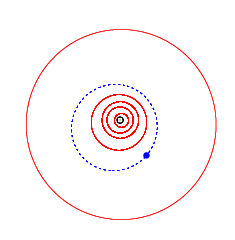
(9948) 1990 QB2 (provisional designation 1990 QB2) is a stony Nysian asteroid from the inner region of the asteroid belt, approximately 3.4 kilometers (2.1 miles) in diameter. It was discovered on 22 August 1990, by American astronomer Henry Holt at the Palomar Observatory in California. The likely elongated S-type asteroid has a rotation period of 3.53 hours. This asteroid has not been named.
5655 Barney, provisional designation 1159 T-2, is a Maria asteroid from the central regions of the asteroid belt, approximately 6.5 kilometers in diameter. It was discovered during the second Palomar–Leiden Trojan survey in 1973, and named for American astronomer Ida Barney in 1994. The stony S-type asteroid has a rotation period of 2.66 hours.
7346 Boulanger, provisional designation 1993 DQ2, is a Koronian asteroid from the outer regions of the asteroid belt, approximately 7.4 kilometers (4.6 miles) in diameter. It was discovered on 20 February 1993, by Belgian astronomer Eric Elst at the CERGA Observatory in Caussols, southeastern France. It was named after French Enlightenment philosopher Nicolas Boulanger.
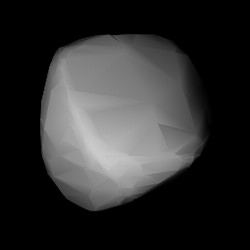
3430 Bradfield (prov. designation: 1980 TF4) is a stony Agnia asteroid from the central regions of the asteroid belt, approximately 8 kilometers (5 miles) in diameter. It was discovered on 9 October 1980, by American astronomer Carolyn Shoemaker at the Palomar Observatory in California. The Sq-type asteroid was named after comet hunter William A. Bradfield.
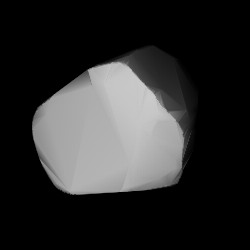
5196 Bustelli is a stony Eunomia asteroid from the central regions of the asteroid belt, approximately 6 kilometers kilometers in diameter. It was discovered on 30 September 1973, by Dutch astronomers Ingrid and Cornelis van Houten at Leiden, and Tom Gehrels the Palomar Observatory. The S-type asteroid was named after Italian-Swiss artist Franz Anton Bustelli.
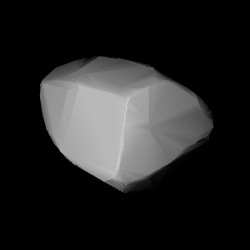
3247 Di Martino is a dark Nysa family asteroid from the inner regions of the asteroid belt. It was discovered on 30 December 1981, by American astronomer Edward Bowell at Lowell's Anderson Mesa Station near Flagstaff, Arizona, in the United States. The asteroid has a rotation period of 5.4 hours and measures approximately 13 kilometers in diameter. It was named for Italian astronomer Mario di Martino.
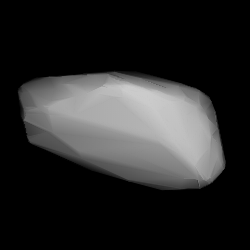
6546 Kaye (prov. designation: 1987 DY4) is a dark and elongated background asteroid from the outer region of the asteroid belt. It was discovered on 24 February 1987, by Czech astronomer Antonín Mrkos at the South Bohemian Kleť Observatory in the Czech Republic. The presumed C-type asteroid has a rotation period of 10.0 hours and measures approximately 22 kilometers (14 miles) in diameter. It was named for American actor Danny Kaye.
7687 Matthias, provisional designation 2099 P-L, is a stony Florian asteroid from the inner regions of the asteroid belt, approximately 4 kilometers in diameter. It was discovered on 24 September 1960, by Ingrid and Cornelis van Houten at Leiden, and Tom Gehrels at Palomar Observatory in California. The S-type asteroid was named for German amateur astronomer Matthias Busch.

4790 Petrpravec is a carbonaceous background asteroid from the central regions of the asteroid belt, approximately 16 kilometers in diameter. It was discovered on 9 August 1988, by American astronomer Eleanor Helin at the Palomar Observatory in California, and later named for Czech astronomer Petr Pravec.
1990 Pilcher, provisional designation 1956 EE, is a stony background asteroid from the Florian region of the inner asteroid belt, approximately 7 kilometers in diameter. It was discovered on 9 March 1956, by German astronomer Karl Reinmuth at the Heidelberg-Königstuhl State Observatory in Heidelberg, Germany. In 1982, it was named by the MPC for American physicist and photometrist Frederick Pilcher. The S-type asteroid has a short rotation period of 2.8 hours.
3790 Raywilson, provisional designation 1937 UE, is a carbonaceous Themistian asteroid from the outer regions of the asteroid belt, approximately 12 kilometers in diameter. It was discovered on 26 October 1937, by astronomer Karl Reinmuth at the Heidelberg-Königstuhl State Observatory in Heidelberg, Germany. The C-type asteroid has a rotation period of 4.65 hours. It was named for English physicist Raymond Wilson.
9142 Rhesus is a larger Jupiter trojan from the Trojan camp, approximately 42 kilometers in diameter. It was discovered during the third Palomar–Leiden Trojan survey in 1977, and later named after King Rhesus from Greek mythology. The dark D-type asteroid has a rotation period of 7.3 hours.
19383 Rolling Stones (provisional designation 1998 BZ32) is a bright Vestian asteroid from the inner regions of the asteroid belt, approximately 2.7 kilometers (1.7 miles) in diameter. The V-type asteroid was discovered on 29 January 1998, by astronomers with the OCA–DLR Asteroid Survey at Caussols in southern France and named for the rock band The Rolling Stones.
2882 Tedesco, provisional designation 1981 OG, is a Themistian asteroid from the outer regions of the asteroid belt, approximately 22 kilometers in diameter. It was discovered on 26 July 1981, by astronomer Edward Bowell at the Anderson Mesa Station near Flagstaff, Arizona. The likely elongated C-type asteroid has a rotation period of 19.8 hours. It was named for American astronomer Ed Tedesco.
4318 Baťa, provisional designation 1980 DE1, is a dark background asteroid from the outermost regions of the asteroid belt, approximately 27 kilometers (17 miles) in diameter. It was discovered on 21 February 1980, by astronomer Zdeňka Vávrová at the Kleť Observatory in the Czech Republic. The D-type asteroid has a rotation period of 10.6 hours and is likely elongated in shape. It was named in memory of Czech businessman Tomáš Baťa.
6189 Völk (prov. designation:1989 EY2) is a stony Vesta asteroid, approximately 4 kilometers (2.5 miles) in diameter, located in the inner regions of the asteroid belt. It was discovered on 2 March 1989, by Belgian astronomer Eric Elst at the La Silla Observatory in northern Chile. The S-type asteroid has a short rotation period of 2.9 hours. It was named for Elisabeth Völk, a staff member at ESO headquarters in Germany.
120375 Kugel, provisional designation: 2005 PB6, is a background asteroid from the inner regions of the asteroid belt, approximately 1 kilometer (0.6 miles) in diameter. It was discovered on 10 August 2005, by French amateur astronomer Claudine Rinner at her Ottmarsheim Observatory (224) in France. The stony S/Q-type asteroid in the region of the Florian clan has a tentative rotation period of 6.9 hours. It was named after French astronomer François Kugel.






